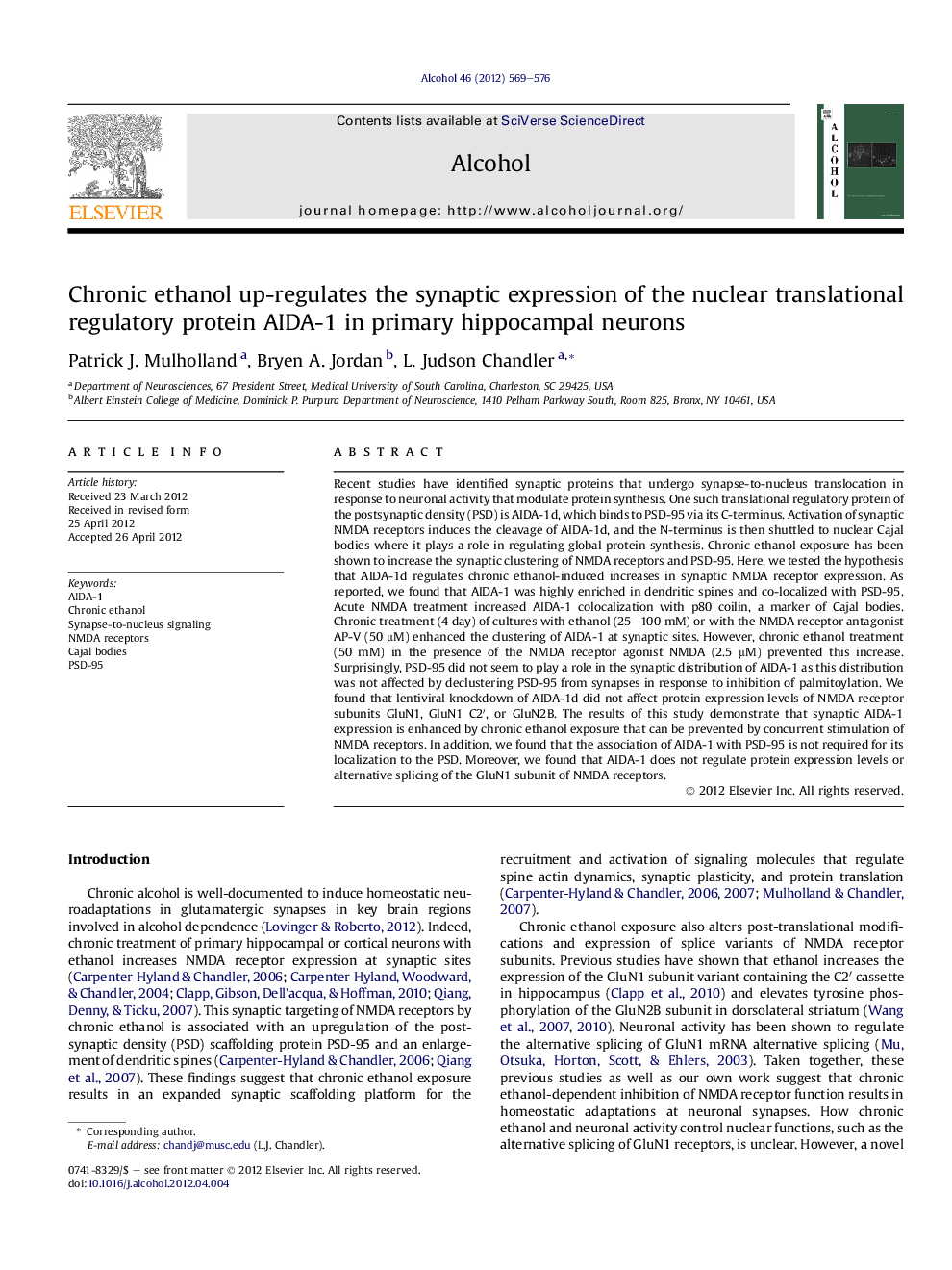| Article ID | Journal | Published Year | Pages | File Type |
|---|---|---|---|---|
| 1067292 | Alcohol | 2012 | 8 Pages |
Recent studies have identified synaptic proteins that undergo synapse-to-nucleus translocation in response to neuronal activity that modulate protein synthesis. One such translational regulatory protein of the postsynaptic density (PSD) is AIDA-1d, which binds to PSD-95 via its C-terminus. Activation of synaptic NMDA receptors induces the cleavage of AIDA-1d, and the N-terminus is then shuttled to nuclear Cajal bodies where it plays a role in regulating global protein synthesis. Chronic ethanol exposure has been shown to increase the synaptic clustering of NMDA receptors and PSD-95. Here, we tested the hypothesis that AIDA-1d regulates chronic ethanol-induced increases in synaptic NMDA receptor expression. As reported, we found that AIDA-1 was highly enriched in dendritic spines and co-localized with PSD-95. Acute NMDA treatment increased AIDA-1 colocalization with p80 coilin, a marker of Cajal bodies. Chronic treatment (4 day) of cultures with ethanol (25–100 mM) or with the NMDA receptor antagonist AP-V (50 μM) enhanced the clustering of AIDA-1 at synaptic sites. However, chronic ethanol treatment (50 mM) in the presence of the NMDA receptor agonist NMDA (2.5 μM) prevented this increase. Surprisingly, PSD-95 did not seem to play a role in the synaptic distribution of AIDA-1 as this distribution was not affected by declustering PSD-95 from synapses in response to inhibition of palmitoylation. We found that lentiviral knockdown of AIDA-1d did not affect protein expression levels of NMDA receptor subunits GluN1, GluN1 C2′, or GluN2B. The results of this study demonstrate that synaptic AIDA-1 expression is enhanced by chronic ethanol exposure that can be prevented by concurrent stimulation of NMDA receptors. In addition, we found that the association of AIDA-1 with PSD-95 is not required for its localization to the PSD. Moreover, we found that AIDA-1 does not regulate protein expression levels or alternative splicing of the GluN1 subunit of NMDA receptors.
